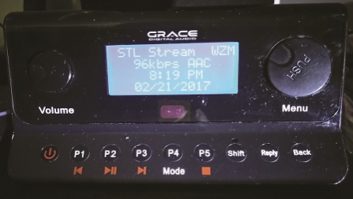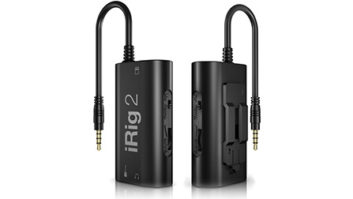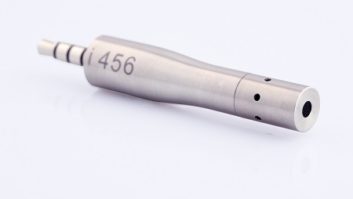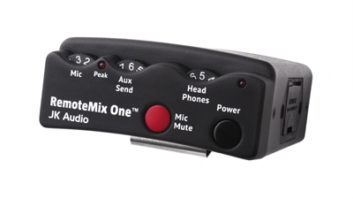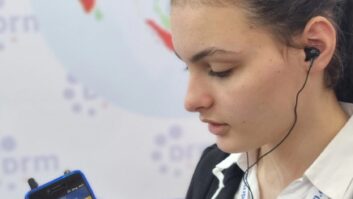
Fig. 1: A typical micro USB On The Go (OTG) Hub that connects USB peripherals to your Android phone or tablet. If you have an Android cell phone, I’ll bet that you didn’t realize that you had a “Swiss Army knife” in your pocket. It turns out that with the proper cable you can use just about any USB device with your phone. The cable is called an On The Go (OTG) cable or adapter, and at first glance, appears to only adapt the “normal” micro USB connection of the phone to a full sized USB one. However, there is more going on than you realize. A few years ago, Android phone manufacturers adopted a standard for their cell phones they named OTG, which works by allowing the phone to become the host for storage devices (like pen drives), keyboards, mice and all sorts of other stuff. Fig. 1 shows a typical micro USB OTG Hub. OTG-certified peripherals are guaranteed to work with OTG, but many other devices work as well. The only disadvantage with OTG is that power is provided from the phone to the device, which means the device can drain down the battery (and you can’t charge your phone while using it in OTG mode).
PLUG IN AND TURN ON
Originally, USB was designed to use a computer as the client and allow you to plug things like keyboards, mice, USB storage dongles and phones into the computer. OTG allows for the reverse — the phone becomes the computer. All kinds of devices can be used: USB hard drives (even 1 TB or larger ones), wireless adapters, USB sound cards and also — my favorite — mixers with built-in USB sound cards. This means that you can plug a mixer into your phone, Skype back to your station and do a remote broadcast with full studio quality and two-way capability. My only caveats: If you are going to use something that draws considerable power, plug the OTG adapter cable into a powered USB hub and let the hub power the devices to save your phone battery. You are also going to want to make sure your phone battery is in good shape and 100 percent charged before use. It’s also a smart idea to bring along a second fully charged battery (and buy a universal battery charger to bring along with you so you can always have one fully charged battery available). OTG cables and adapters are available all over — I found one at Micro Center for less than $3.
INSIDE THE OTG CABLE
How does an OTG cable work? To understand, we have to go back to the USB specification. The original USB spec used four wires colored red, black, green and white. Red provides +5 volts power. Black is ground. Green and white are half duplex balanced data. Being balanced, that data can sometimes go hundreds of feet — the limitation is the voltage drop from the small diameter red and black wires (typical USB cables use 26 gauge or smaller conductors). I have actually sent USB data over 500 feet by running a local 5-volt power supply at the far end, something we’ll talk about in a future article.
THE FIFTH BEATLE, ER, PIN
The micro USB standard provided a fifth pin — and by tying that pin to ground, it puts the phone into OTG mode. One thing I do when working sporting events at colleges is use an “A mode” WiFi adapter. Why? The WiFi module in most Android phones only operate in G or N mode (at 2.4 GHz) and the phones’ internal WiFi unit draws considerable current from the battery. Instead, bring along an “A mode” WiFi USB adapter, plug it into your powered hub and turn off the WiFi in your phone. This way, you will not only double your battery life, but be able to use the much less congested A wireless band (since most modern iPhone and iPad products use A wireless, it is available all over). Instead of being limited to the three 2.4 GHz non-overlapping channels, you will be using the 5.8 GHz band — with its 64 non-overlapping channels. I have also used OTG to connect a wired USB network adapter with my phone, since many locations offer wired Internet.
WHERE TO FIND AN OTG ADAPTER
This is the OTG cable I normally bring on trips. It has a built-in three-port USB hub and can also power any devices plugged into the full-size USB sockets simply by plugging in my phone power supply into the micro USB connection (though doing so does NOT also charge the phone). I bought three of these at $1.27 each, shipped free.
http://tinyurl.com/rwee-otg1
This is a mixer that I have successfully used with my Android phone. I even send IFB back to the remote via Skype. Of course, there are also many other programs that will do this.
http://tinyurl.com/rwee-otg2
Want to know more about OTG and/or even make your own OTG cable? You can find additional information here:
http://tinyurl.com/rwee-otg3
and here:
http://tinyurl.com/rwee-otg4
Another tip: Bring along a USB Flash Drive, or several for that matter, all loaded with movies and/or music on your next trip — and have the kids to the same — you’ll have plenty of entertainment, which will make the trip seem shorter.
Bring along a USB to HDMI adapter to connect your phone on the flat screen TV in your hotel room. Try running a mouse on your phone — it is, shall we say, a “different” experience. Using a USB keyboard with your phone can make typing out documents and messages a lot easier. I bring along a “roll up”-type keyboard with me in my bag on trips. You can also use OTG adapters to make a wired connection to many printers from your phone.
By using OTG, you can get a lot more capability out of your Android phone — in fact I have found in many cases, it is no longer necessary to bring along a laptop computer — just my phone, an OTG cable, powered USB hub, fold-up keyboard and occasionally an A mode wireless or RJ45 wired USB device.
Dana Puopolo is chief engineer at WGLS(FM), Rowan University in Glassboro, N.J.





